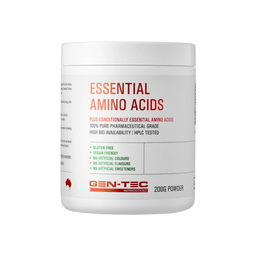
Gentec EAA
$ 44.95 $ 42.96
$ 0.00

Gentec EAA
GEN-TEC NUTRACEUTICALS source, blend and package 100% pure pharmaceutical grade Free Form Amino Acid powder.
SKU: 25033038, 25246292,
CATEGORIES: Performance, Amino Acids & BCAA's,
BRAND: Gentec
Once the user has seen at least one product this snippet will be visible.
Recently viewed Products

To install this Web App in your iPhone/iPad press ![]() and then Add to Home Screen.
and then Add to Home Screen.

